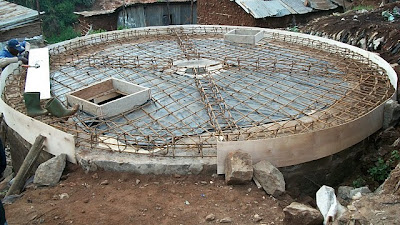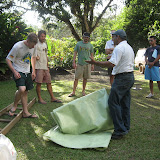TSB set to install biogas plants in 14 sisal estates
The Tanzania Sisal Board (TSB) has taken bold and foresighted decision by opting for biogas for power generation to its sisal estates. OUR CORRESPONDENT reports that the ambitious project will initially cover 14 sisal estates specifically picked because of their performance.
The move, he writes, will enable TSB to stop using power from the national power utility firm - TANESCO - which at present pockets 40 per cent of the total running cost in the sisal industry. The 14 biogas plants are expected to generate about 500 MW, sufficient to meet the estates’ needs while the surplus will be sold to the national grid. Read on…
Electricity stakeholders in the country - manufacturing industries, institutions and individual households - are evidently not happy with the country’s sole energy power provider, the Tanzania Electricity Supply Company (TANESCO).
They are particularly frustrated by the intermittent power cuts which have persisted for too long. As if this was not a serious shortcoming, the stakeholders have again to grapple with ever escalating exorbitant power tariffs.
Experts believe that the suffering wrought on the populace is a result of the power utility firm’s monopoly in the provision of electricity in the country.
“TANESCO should not be allowed to run its business side by side with the government. It should have competitors. In the process, prices of electricity will be pushed down”, says a Dar es Salaam based industrial engineer.
He believes that competition which would be brought about by investment in the sector could cover a larger population of power users; hence more revenue to the government.
Having noticed that the country’s energy cost is too high, the Tanzania Sisal Board (TSB) has envisaged to put up a total of 14 biogas plants for production of biogas for electricity generation.
The parastatal also aims at running away from the present exorbitant cost which it pays to TANESCO, amounting to 40 per cent of the total direct running cost in the sisal industry.
“The anticipated move is intended to enable TSB to participate fully in supplementing the government’s efforts to provide power to the country,” says Hamisi Mapinda, TSB’s Acting Director General.
Mapinda said the plants would be erected at sisal estates earmarked for this purpose.
“Fourteen estates where the plants will be installed were picked on merit based on performance,” said the acting DG in an exclusive interview with THE GUARDIAN recently.
The plants will be installed at Magoma, Gomba, Rudewa, Magunga, Fatemi, Kigombe and Kwaruguru estates.
Other estates are Mwera,Toronto, Mazinde, Mkumbara, Lugongo, Mwelya and Ubena.
The DG said the proposed plants are expected to generate about 500 MW, which according to the board, is sufficient to meet the estates needs while the surplus will be sold to the national grid.
“Apart from the envisaged installation of the plants, we also intend to erect 3,000 digesters to 3,000 households for generation of biogas for both lighting and cooking,” he says.
Mapinda said his institution has already prepared a 10 year crop development plan - an implementation of the Election Manifesto 2010 - for the purpose of promoting production and productivity in the sisal industry and ultimately overcoming the effects of poverty, hence ensuring household food security.
According the proposed plan, which has already been availed to stakeholders for their views as implementers of the strategy, a large chunk of land - 146,061.69 hectares of sisal - has been earmarked for development.
“This includes 131,069.79 hectares of mature sisal land and 14,981.90 hectares of immature sisal land,” says Mapinda.
The area under the ownership of small scale sisal farmers will be increased from the present 6748 hectares in 2010 to 22,200 hectares in 2020,” he says.
In order to ensure the selected estates have enough sisal for decortications, the industry will put emphasis on replanting new sisal, cleaning of existing sisal fields as well as encouraging the use of soil and water conservation techniques, according to Mapinda.
To succeed in such endeavors, TBS’s plan lists objectives such as mobilization of financial, human and technological resources for increased production.
Others, says the sisal boss, are increases in the country’s export market share from the current 7 per cent to 39 per cent within the plan period.
“Participation of small holders and out-grower farmers in the industry, shall be increased from the current 418 households in 2010 to 4,400 households within the plan period,” according to him, adding that the aim is to widen their participation and improve the farmers income and alleviate poverty.
Presently, the sisal industry has one biogas plant – installed at Hale in 2007 as a pilot project. Built at a cost of 1.5 million US dollars, it was financial by Common Fund for Commodities (CFC), United National Development Organization (UNIDO) and the government of Tanzania.
Commenting on the proposed installation of the plants, a retired government school head, Aloyce Gondwe, said TSB had taken a step in the right direction by investing in other sources of power.
He added: “The government should use what is available in the country. There is solar energy, windmill etc. which are cheaper than hydroelectric power.”
Sole dependence on hydro power is not appropriate, he says, adding: “The use of this energy is too expensive because for electricity to reach a village or school, you need poles, wires and transformers, components which are definitely out of the reach of the intended consumers”.


















 Like
Like








